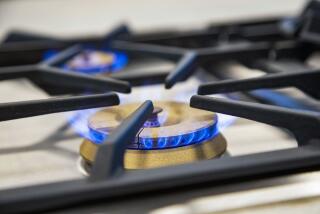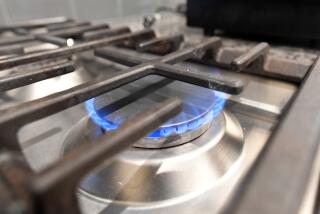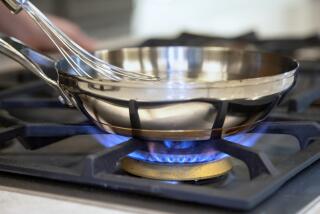MAINTENANCE : Rust and Dust Are Twin Threats to Gas Furnace
- Share via
Tuning up your gas furnace is something you can do yourself in less than an hour with a few simple hand tools and a vacuum cleaner.
In most cases, the entire job consists of cleaning and lubricating the blower unit and cleaning and adjusting the burner assembly. This simple maintenance is your best front-line defense in the battle against the twin threats to furnace life and efficiency--dust and rust.
As long as you stay clear of the control valve and limit switches and put back everything as you found it, there’s little chance of error.
You can see if your burner is improperly adjusted by watching the burners in operation. A standard gas furnace will have two, three or four burners, each with some sort of ignition crossover device.
When the furnace starts, ignition should progress evenly from one burner to the next and without hesitation or a late flash. Once lit, the burners should operate with a steady blue flame.
If you see a burner-to-burner start-up ignition that displays a noticeable puff and small flash, then gas is not moving through the crossover pieces that ignite each burner in sequence. In all likelihood, one of these crossover members is clogged with dirt or rust.
If you see a burner that doesn’t ignite at all, or only puffs on and off sporadically, it’s a good bet that the gas jet that feeds it is partially clogged with dirt or rust.
A burner that shows flame gaps along its length during normal operation suggests that some of the gas ports are clogged. If you see a burner whose flame lifts off its ports, you can bet that the air mixture on that burner is too rich.
Conversely, a flame that burns orange and lazy (wavering from side to side) means there’s too little air in the mix. Before attempting to regulate the air intake, the burner assembly should be cleaned.
Before working on the furnace, shut off the electrical disconnect switch so the furnace can’t come on. If there’s no switch, turn the gas control from “on” to “pilot.” Then vacuum the inside of the cabinet.
To remove a burner for cleaning, remove the securing clip that holds the burner to the feed pipe. Then carefully lift the burner and slide it out of its seat below the heat exchanger cell.
Once it’s removed, turn it so the open end faces down and tap the burner repeatedly on the floor or some other hard surface to dislodge rust particles inside.
If you’ve noticed gaps in the flames on that burner, poke a thin wire or small Allen wrench into each of the burner openings. Then tap the burner on the floor again. Finally, clean the openings in the crossover member with a thin-bladed knife and vacuum the entire chamber thoroughly.
To service the gas jet, back the entire jet from its threads in the feed pipe and then clean it with a thin wire or small Allen wrench. When the jet is cleared, thread it back into its opening until snug. No joint compound is needed.
Burners are usually adjusted by either sliding sleeves or rotating end caps to align their openings to a greater or lesser degree with openings on the burner.


